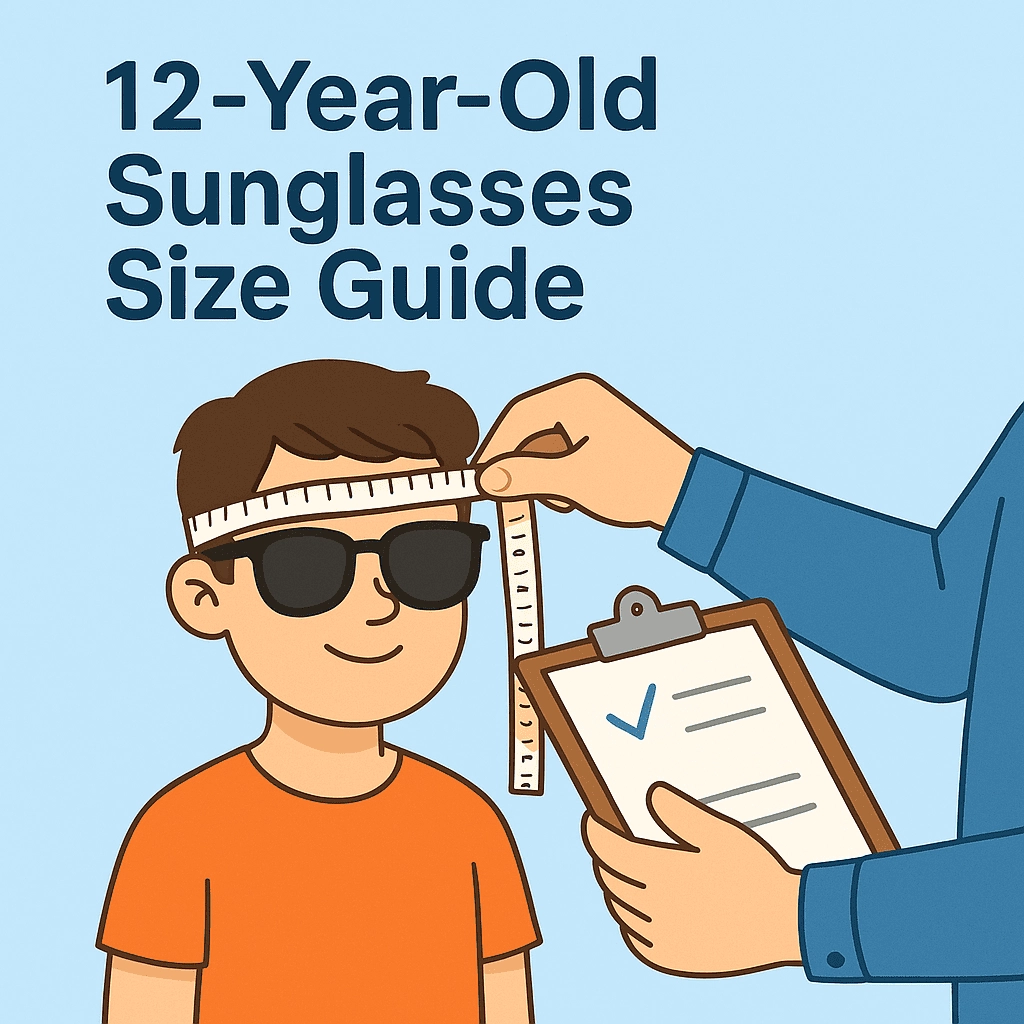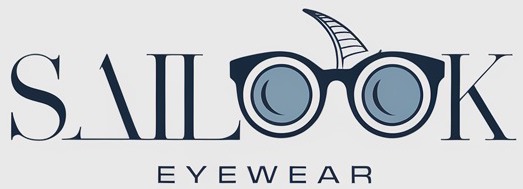This guide tackles a common headache for parents and retailers: matching a child’s measurements with sunglass dimensions. You’ll learn precise steps for measuring head width, lens size, bridge span, and temple length so every pair fits securely. I’ve helped hundreds of brands and families achieve ideal fits with simple techniques.

## 1. What head measurements matter for a 12-year-old’s sunglasses?
How to measure temple-to-temple width
Place a soft tape measure across the widest part above ears. Hold tape snug but not tight. Record millimeters precisely.
Determining forehead circumference
Wrap tape over brow ridge above eyebrows. Keep tape level against skin. Note circumference in millimeters.
Assessing cheekbone span
Measure from outer edge of one cheekbone to the other. Aim just below pupil level. Ensure tape lies flat.
But here’s the kicker… precise head data prevents sliding frames during play
Regular checks help adjust fit as a child grows rapidly
Accurate measurement reduces returns and boosts satisfaction
## 2. How do you measure lens width correctly?
Tools you need for accurate measurement
Use calipers or ruler marked in millimeters. Ensure zero alignment before reading.
Common lens-width ranges for preteens
Typical widths fall between 45 mm and 50 mm. Styles may vary by face shape.
Why too-narrow lenses pinch
Narrow lenses press against temples. That creates discomfort. Kids fidget or remove them frequently.
What’s the real story? correct lens width balances coverage and comfort
Kids resist heavy glasses when size matches nose and temples
Quality brands display clear size specs to guide choices
## 3. What bridge width fits a young teen?
Understanding nosepad spacing
Bridge width equals center distance between lens pads. It dictates how glasses rest on the nose.
Bridge styles for different nose shapes
Low nose bridges benefit from adjustable pads. High bridges suit fixed silicone nose pads.
Impact on overall frame balance
Proper bridge span centers frames over eyes. Misaligned bridges tilt frames off level.
Ready for the good part? matching bridge width avoids sliding downhill on the nose
Adjustable pads add flexibility across face shapes
Customized bridge options enhance B2B offerings
| Bridge Type | Nose Shape Suitability | Pad Material |
|---|---|---|
| Adjustable Silicone | Low bridge | Hypoallergenic |
| Fixed Metal | High bridge | Nickel-free |
| Integrated Acetate | Medium bridge | Molded acetate |
## 4. How should temple length be chosen?
Measuring from hinge to ear tip
Extend temple outward. Measure along its curve to tip end.
Signs of temples that are too short or long
Short temples pinch behind ears. Long temples slide off easily.
Adjustable temple-tip options
Rubber temple tips offer grip. Coil springs inside hinges provide stretch.
This is where it gets interesting… proper temple length locks glasses in place
Temple tips with soft material improve all-day wear
Brands that offer multiple temple lengths win repeat orders
## 5. What frame shapes suit a 12-year-old face?
Oval faces and round lenses
Oval faces pair with round or oval lenses that mirror natural contours.
Square-jaw faces and aviator styles
Aviator shapes soften angular jaws. Double-bridge designs add flair.
Heart-shaped faces and butterfly frames
Butterfly frames widen the upper face. They balance narrow chins.
But here’s the kicker… shape selection affects style and fit simultaneously
Offering style guides helps B2B clients upsell confidently
Pairing frame shape with face type reduces sizing errors
## 6. How to pick safe materials for kids’ frames?
Benefits of flexible acetate
Acetate bends under pressure and springs back. Ideal for active wear.
Lightweight TR-90 options
TR-90 resists breakage and weighs mere grams.
Hypoallergenic stainless steel
Stainless steel avoids skin reactions. Suitable for sensitive skin.
What’s the real story? material choice impacts durability and comfort
Eco-friendly and hypoallergenic options appeal to health-conscious buyers
B2B suppliers must showcase certified material specs
| Material | Weight (g) | Flexibility | Hypoallergenic |
|---|---|---|---|
| Acetate | 28 | High | Medium |
| TR-90 | 20 | Very high | High |
| Stainless steel | 25 | Moderate | Very high |
## 7. Why is UV protection crucial for young eyes?
Understanding UV400 rating
UV400 lenses block ultraviolet rays up to 400 nm.
Polycarbonate vs. CR-39 lenses
Polycarbonate offers impact resistance. CR-39 provides superior optics.
Tint levels and outdoor activities
Dark tints excel for beach days. Gradient tints suit driving and casual wear.
This is where it gets interesting… youth eyes absorb more UV than adults
Full UV400 protection prevents long-term damage
Brands who certify UV blockage gain trust
## 8. How to test sunglass comfort in person?
Four-point fit checklist
Check nose pads, temples, frame front level, and cheek clearance.
Temple pressure test
Press temples gently against head. Note any pain spots.
Nosepad pinch test
Grip bridge area to assess pressure. Ensure comfort for extended wear.
But here’s the kicker… a quick comfort check prevents unhappy customers
In-store fitting stations boost sales conversion
Simple test protocols support B2B demos
## 9. What fitting adjustments can be made at home?
Before you panic over a loose or tight fit there are simple at-home tweaks you can try yourself so your child stays comfortable without a trip to the optician. Ready for the good part? Start by warming the frame gently using warm water or a hairdryer on low heat for no more than 15 seconds. That makes acetate or plastic temples more pliable so you can bend them slightly inward or outward to match ear width. For metal frames apply heat sparingly then use a soft cloth and your fingers to grip and adjust the temple curve so the tips hug the back of the ear without pinching.
Next move to nosepads if they feel too loose or too tight. For adjustable silicone pads pinch them gently inward or outward using your thumb and index finger. If your pads are removable look for tiny screws at the hinge and tighten them slightly with a precision screwdriver—no over-twisting or you’ll strip the threads. For integrated acetate pads use a tiny jeweler’s file to smooth rough edges that might dig into skin.
Here’s another trick: add clear self-adhesive nosepad cushions available at optical supply stores. They stick onto the bridge and increase friction so glasses don’t slide down the nose. They also relieve pressure on sensitive spots.
Finally, replace temple tips with aftermarket soft rubber sleeves that slide over existing ends and cushion the area behind ears. These sleeves come in various lengths and diameters so you can customize fit precisely.
Keep track of each adjustment in a simple log noting date, method, and result so you know which tweaks improved comfort. That prevents random bending that can warp frames.
| Adjustment Type | Method | Recommended For |
|---|---|---|
| Heat-bend temples | Warm frame then gently bend | Slightly loose temples |
| Silicone pad pinch | Squeeze pads inward/outward by hand | Adjustable bridge |
| Screw-tighten nosepads | Tiny screwdriver, turn screws ¼ to ½ turn | Loose pad frames |
| Adhesive nose cushions | Stick-on cushions | Sliding frames |
| Rubber temple sleeves | Slide over tip ends | Ear pressure relief |
## 10. How to choose polarized vs non-polarized lenses?
Polarized lenses contain a special chemical filter that blocks horizontal glare reflecting off surfaces such as water or pavement. But here’s the kicker… glare reduction boosts visibility and reduces eye strain especially during sports or driving. If your preteen spends time on the beach or boat polarized lenses cut glare dramatically so they don’t squint or get headaches. For winter sports like skiing or snowboarding polarization also cuts surface glare off snow. However some optical instruments like LCD screens on boats may appear distorted through polarized lenses so non-polarized may suit niche activities.
Non-polarized lenses still block UV rays if rated UV400 but they let through reflected glare. Their simplicity makes them more affordable so they work if budget is a concern or for everyday casual use. You can even combine polarization with mirror coatings that reflect additional light for high-sun environments.
Consider cost versus benefit. Polarization adds roughly 20–30% to lens price. Schools or sports teams ordering in bulk can negotiate lower polarization premiums. For retailers offering B2B discounts educating clients on polarization value versus cost encourages upsells.
| Lens Type | Glare Reduction | UV Protection | Typical Cost Increase | Best For |
|---|---|---|---|---|
| Non-polarized | Low | Yes (UV400) | Base price | Indoor or light outdoor use |
| Polarized | High | Yes (UV400) | +20–30% | Water sports, driving, skiing |
| Polarized mirror | Very high | Yes (UV400) | +30–40% | High glare outdoor environments |
## 11. What style trends appeal to 12-year-olds?
Keeping pace with youth preferences demands research into evolving style trends and influencer culture. What’s the real story? Bold colors and playful patterns reign supreme among preteens who see sunglasses as fashion statements. Transparent frames in pastel hues like mint green or lilac remain hot this season. Classic black still carries cool factor when paired with mirrored lenses in rose gold or silver. Cartoon-inspired designs featuring subtle branding spots—think small hero badge at temple hinge—also resonate.
Brands partnering with popular content creators or gaming channels gain traction quickly. Limited-edition drops tied to movie releases or viral memes spur urgency. Retailers can offer mix-and-match lens and frame color kits so kids customize their own combos. That interactive element elevates engagement and drives repeat orders.
Don’t forget functionality: wind-resistant wraparound frames for cycling or skateboarding merge style and purpose. Brands selling B2B should highlight these hybrid models for sports teams or youth programs.
| Trend | Frame Material | Lens Style | Notable Collaboration |
|---|---|---|---|
| Pastel transparent | Acetate | Gradient | Popular YouTuber collab |
| Mirrored classic black | Metal/acrylic | Mirror finish | Sports team endorsement |
| Wraparound bold | TR-90 | Polarized | Action sports brand tie-in |
| Custom decal kits | Silicone | Standard | Game franchise limited |
## 12. How to compare price tiers for kids’ sunglasses?
Price tiers range from budget $10–$20 mass-market models to premium $50–$100 designer or specialty sports frames. This is where it gets interesting… budget options use basic plastic frames and non-polarized lightweight lenses. Mid-tier models at $20–$40 add UV400 lenses, metal hinges, and basic polarization options. Premium tiers include custom engraving, branded logos, multiple lens coatings, and adjustable temple springs for durability. Retailers buying in volume can unlock wholesale price breaks as low as $8 per unit for budget models or $30 for polarized mid-tier.
Bulk-order discounts often start at 50–100 units. Some manufacturers waive tooling or logo setup fees at higher minimums. B2B suppliers should provide clear tiered price sheets in PDF or spreadsheet so procurement managers compare at a glance. Include MOQ, lead time, and packaging options line by line for transparency.
| Tier | Price Range | Key Features | MOQ for Discount |
|---|---|---|---|
| Budget | $10–$20 | Standard plastic, UV400, basic style | 100 units |
| Mid-tier | $20–$40 | Metal hinges, polarized add-on, spring hinges | 50 units |
| Premium | $50–$100 | Custom logos, engraving, multi-coatings | 30 units |
## 13. How to read size codes on sunglass listings?
Size codes often follow the numeric pattern lens–bridge–temple (e.g., 48–17–130). But here’s the kicker… lens number 48 indicates lens width in millimeters, 17 the bridge width, and 130 the temple length. Letters S, M, or L sometimes follow to indicate small, medium, or large standardized fits. When shopping online avoid guesswork by requesting full millimeter specs from vendors. Some sellers list only S/M/L which lacks precision so ask for exact numbers.
Proprietary codes may include extra digits or letters denoting frame color or material. For example B48-17-130AC might mean black acetate with those measurements. Always verify with product description. For B2B partnerships encourage suppliers to adopt universal code formats to streamline bulk purchasing and warehouse labeling.
| Code Segment | Meaning | Typical Range |
|---|---|---|
| Lens width | Horizontal lens dimension | 45–55 mm |
| Bridge width | Distance between lenses | 14–20 mm |
| Temple length | Length of temple arm | 120–145 mm |
## 14. What online buying tips ensure a good fit?
Online fitting hinges on quality visuals and detailed specs. What’s the real story? Virtual try-on tools using webcam overlays let customers see frames on their face live. Encourage clients to embed these tools on product pages. When virtual try-on isn’t available provide downloadable PDF templates to print and cut frame outlines at 1:1 scale. That gives accurate feel.
Clear return policies matter. Offer at least 30-day free exchanges for size swaps. Highlight that in ecommerce copy—parents value low-risk purchases. Include customer-photo galleries showing real kids wearing frames with head measurements listed alongside. That social proof guides sizing decisions.
| Buying Tip | Description | Benefit |
|---|---|---|
| Virtual try-on | Webcam overlay | Instant fit visualization |
| Print-and-cut templates | 1:1 scale frame outlines | Precise offline fitting |
| Photo reviews | User photos with measurements | Real-world sizing guidance |
| Flexible return policy | 30-day free size exchange | Reduces purchase anxiety |
## 15. How to care for and maintain kids’ sunglasses?
Proper care extends product life and safeguards investment. Ready for the good part? Daily cleaning with microfiber cloth and lens spray prevents scratches. Store sunglasses in hard-shell cases when not in use. Avoid leaving frames in hot cars or direct sunlight to prevent warping and discoloration.
For active families provide cleaning kits with case, cloth, and spray as upsell or branded gift. Replace nosepads when they yellow or harden—optical supply shops sell replacement pad sets in bulk. Tighten screws monthly using jeweler’s screwdriver. For frames that get loose swap in spring-hinge temples to maintain snug fit.
| Maintenance Task | Frequency | Tools Needed |
|---|---|---|
| Lens cleaning | After each use | Microfiber cloth, spray |
| Screw tightening | Monthly | Precision screwdriver |
| Nosepad replacement | Every 3–6 months | Replacement pads |
| Case storage | Daily | Hard-shell case |
## Conclusion
Matching sunglasses to a 12-year-old’s unique measurements prevents fit issues and promotes consistent use. Accurate head, lens, bridge, and temple measurements coupled with material, lens type, and style considerations ensure both comfort and protection. At-home fittings and online tools make size selection straightforward while tiered pricing and trend insights empower retailers. Implement these techniques and watch returns drop while satisfaction soars.
FAQ
Q1: What is the ideal sunglass size for a 12-year-old?
The ideal size matches head width, temple length, lens width, and bridge spacing to your child’s measurements.
Q2: How does UV400 protection work?
UV400 lenses block both UVA and UVB rays up to 400 nanometers for full eye safety.
Q3: Can I adjust frame fit at home?
Minor tweaks like gentle heating and bending temple tips or nosepads can improve comfort—professional help may be needed for major changes.
Q4: Are polarized lenses necessary for kids?
Polarization reduces glare on water or pavement but adds cost; choose based on activity and budget.
Q5: How often should kids replace sunglasses
Replace when lenses scratch or frames loosen beyond safe fit—typically every 6–12 months with regular wear.

